WRACK LINE
8 March - 11 April 2024
Arts SU Gallery Space, 272 High Holborn, London, WC1V 7EY
Wrack line - a strip of debris left on a beach by the high tide. Ephemeral and internally diverse, it's a unique meeting spot for marine life forms such as clams and crabs, but also the organic remains of various sea species, bones, empty shells, and driftwood. There are also the unwanted guests at the wrack line, covered in brown and yellow algae - glass, plastic, and other human-produced waste, accumulated in the seawaters. When we encounter kelp, shells, and miniature life forms gathered at the wrack line, we look at them from above, occasionally searching for pretty seashells, running our fingers through slimy algae, and shuddering with disgust when we come across a cigarette butt. What if we could understand the whispers of this collective microcosm? What if, instead of stories of beauty from the sea depths, we heard the promise of revenge?
'Wrack line' explores the ideas and limits of human and non-human relationships through the language of contemporary art practices. Featured works focus on the boundaries of organic and non-organic beings, their materiality, and agency. Sculptures by Mirka Vecerova, Urte Janus and Julia Shu explore the materiality of life forms, balancing on the edge of futuristic science-fiction imagery and geological familiarity, whilst Karol Chmielewski delves into the sonic intricacies of life at the wrack line. Wrack line residents are reminiscent of chalky fossils discovered after years of being buried in the ground; but also because of their shiny, gooey, and slimy qualities, they come alive.
Janus' works ooze with the destructive powers of natural erosive materials, such as salt and acids, used by the artist on chalk. The abrasive nature of those agents is not yet seen as catastrophic but transformative. Her practice of using microelements that constantly penetrate and change the body of the work slowly but steadily uncovers the limits of the human eye, to which the chemically complicated effect of that process may not be immediately noticeable. Vecerova's fossils' power is locked in their gaze, looking directly back at their observer. The juxtaposition of matte and dry chalk with colourful and glossy eyes breathes life into the bodies of her creatures but does not try to make them speak in ways that humans understand. Instead, Vecerova embraces the unknown, the alien, and the bizarre, working alongside nature without asserting dominance. Julia Shu’s ‘Metanature’ unfolds a dynamic symbiosis between living organisms and the discarded tech. Bioacoustics play a crucial role in the landscape of interspecies communication, fostering a deeper understanding of the evolving relationship between the living and non-living. Karol Chmielewski’s soundscape is a sonic take on the fragmented and multilayered structure of the wrack line. Through the usage of various sound textures, he tells the story of marine echoes, juxtaposed with the grainy and harsh melodies, working in unison together.
The exhibition explores futuristic imagery and soundscape, playing with the art history of marine representations, such as still lifes with shells, cabinets of curiosities featuring coral reefs and other sea life forms, detached from their original surroundings and catalogued to please the human eye. It also recalls the images of sea monsters accompanying the corners of seventeenth-century maps, when the sea as an ecosystem was imagined as dangerous, treacherous, and unknown. According to research by Burden, A., Smeaton, C., Angus, S., Garbutt, A., Jones, L., Lewis H.D.and Rees. S.M., titled ‘Impacts of climate change on coastal habitats relevant to the coastal and marine environment around the UK’ (2020), natural coastal systems are very resilient to change, and they have the ability to self-regulate. However, human alterations made to the coasts over the years, violated those ecosystems and thus affected their ability to self-regulate, posing a real threat for further destabilisation of the coastline. Whilst creatures from the ‘Wrack Line’ might plan for their revenge and total takeover of the coastline, the human quest for reframing the relationship with the ecosystem becomes more pressing than ever.
Exhibiting Artists: Julia Shu, Karol Chmielewski, Miroslava Vecerova & Urte Janus.
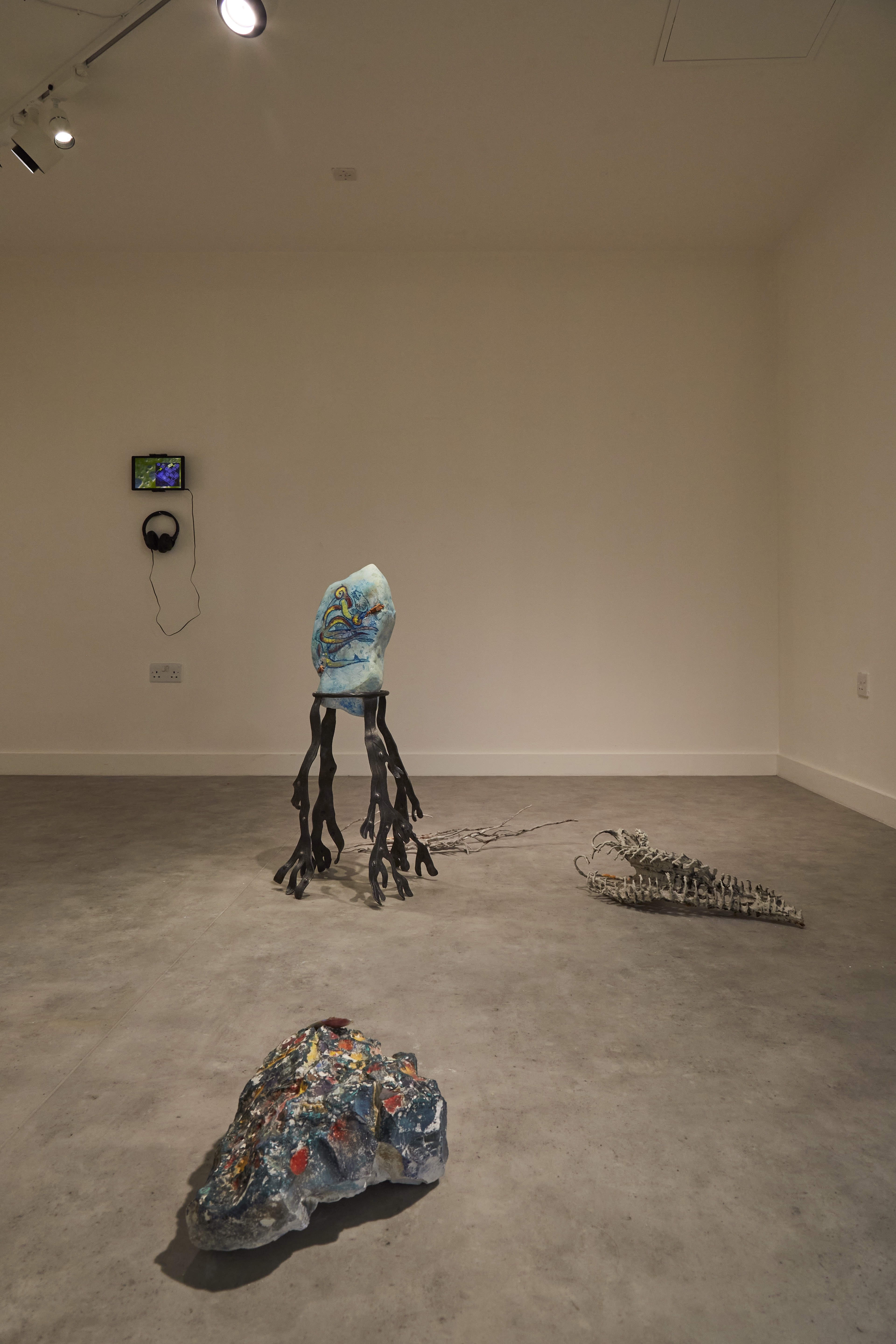

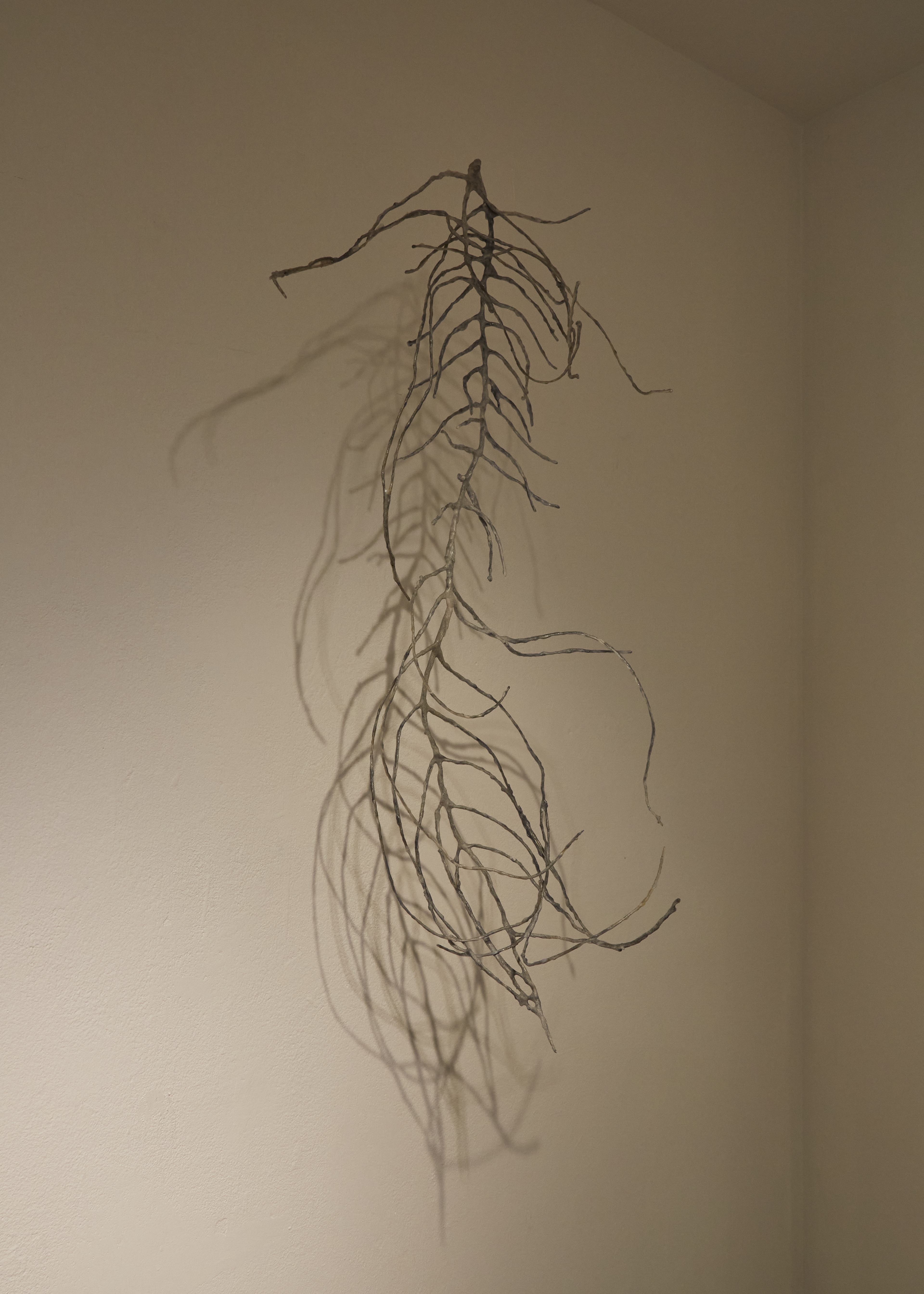







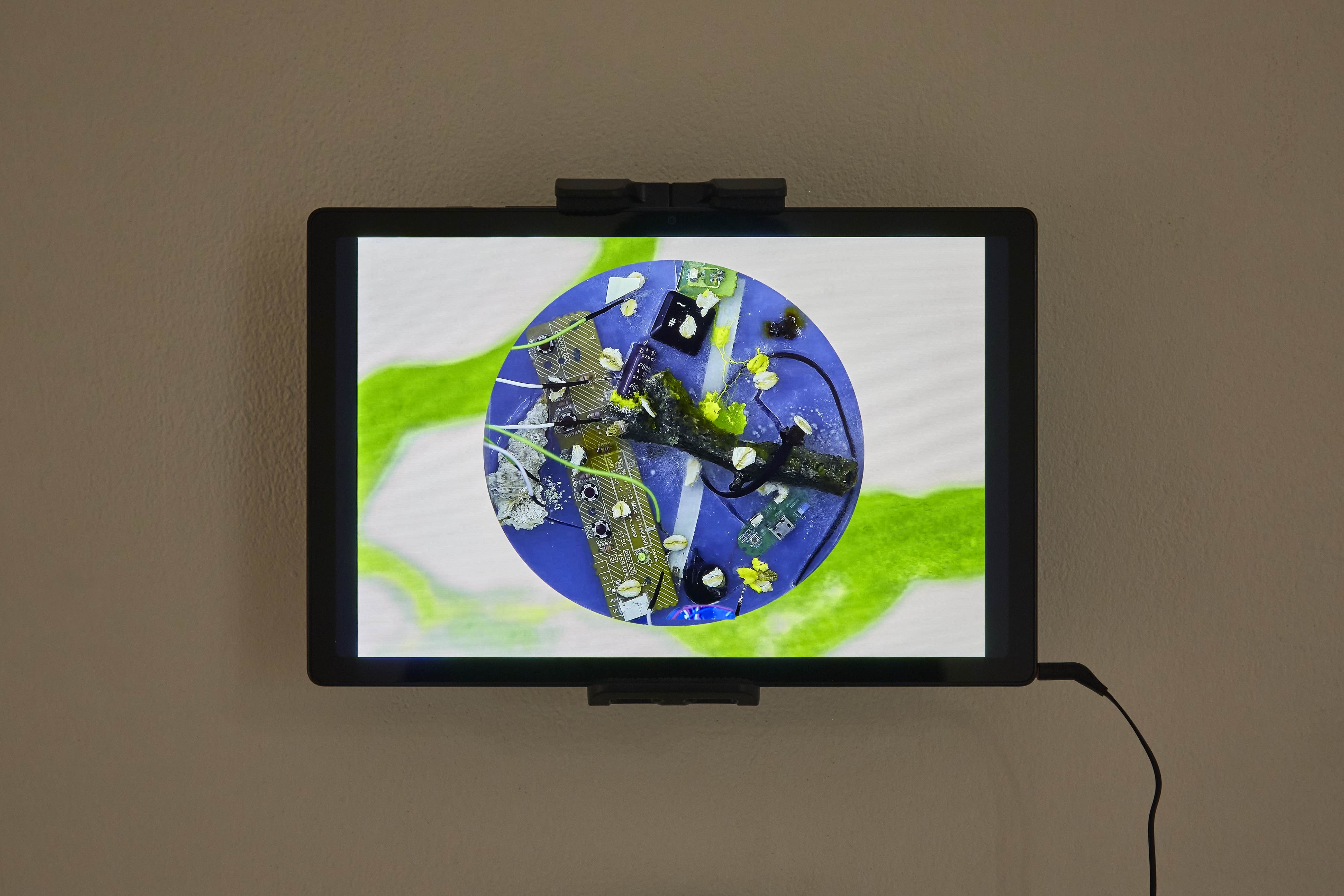 Photo credits: Corey Bartle-Sanderson. Supported by SU UAL
Photo credits: Corey Bartle-Sanderson. Supported by SU UALOn Resilience
Migration Matters Festival
06.2023, Sheffield
Migration Matters Festival
06.2023, Sheffield
On Resilience was a programme strand platforming East-Central European creative voices. It addressed topics such as hostility, prejudice and stereotypes, as well as community support and celebration of traditions in post-Brexit Britain. The programme introduced Midlands and London based CEE creatives to Sheffield audiences and brought CEE joy, creativity and resilience to the forefront of the festival.
Migration Matters Festival is Britain’s largest festival about Sanctuary, immigration and refugees. Sheffield-based festivalcreates a platform to champion the voices of people who are so often muted, pigeon-holed into labels and rarely genuinely offered a chance to shape in the cultural and artistic landscape of the cities they live in. For seven incredible years the festival has programmed everything from internationally renowned artists, award winning companies, spectacular dance troupes and powerful community celebrations with a strong emphasis on platforming refugees and people who have experienced displacement, detention or the UK’s inhumane asylum system. This is in addition to the events where people have broken bread together at Open Iftars, played football in intercultural tournaments, made puppets, zines, shirts, learned to vogue chi, tell stories, dance and find friendships.
Migration Matters Festival is Britain’s largest festival about Sanctuary, immigration and refugees. Sheffield-based festivalcreates a platform to champion the voices of people who are so often muted, pigeon-holed into labels and rarely genuinely offered a chance to shape in the cultural and artistic landscape of the cities they live in. For seven incredible years the festival has programmed everything from internationally renowned artists, award winning companies, spectacular dance troupes and powerful community celebrations with a strong emphasis on platforming refugees and people who have experienced displacement, detention or the UK’s inhumane asylum system. This is in addition to the events where people have broken bread together at Open Iftars, played football in intercultural tournaments, made puppets, zines, shirts, learned to vogue chi, tell stories, dance and find friendships.







Becoming a body of water
04.2023
David Kovats Gallery, London
Becoming a body of water was a group exhibition, showcasing works by UK-based, East-Central European women artists. The show explored the social experience of being and becoming a CEE migrant woman through notions of adaptability, resilience, self-exploration, and connection with surroundings and the natural world.
The exhibition is inspired by the concept of hydrofeminism, developed by a cultural scholar and writer Astrida Neimanis. Neimanis’ writing and research focus on the cultural, social and political relationships between aquatic environments and Earth’s inhabitants, whose bodies are built primarily from water. Neimanis calls for a reevaluation of systems of power and responsibility, and advocates for creating sustainable bonds within the environment and between humans, based on care, trust and empathy.
In the Western art history, water has often been a symbol of transformation, change or unpredictability. It is ever-flowing and can take any course, depending on the circumstances and the vessel it inhabits. The exhibition revised the ideas of fluidity, adaptability and empathy concerning the East-Central European women artists' migration experiences.
Acceptance of change is a crucial element of the process of socialisation in a new environment, which eventually becomes home. We are ever-becoming, questioning our forms or essences as something fixed, solid and rigid. This fluidity becomes a tool of one’s resilience and agency.
Showcased works delved into fluidity on the symbolic level, through the explorations of self or the environment, but also on the literal level, by experimenting with textures, and natural materials, playing with the idea of preserving the elusive. The exhibition celebrates the resilience of CEE migrant women and provides a platform for their work and expression, which continues to be underrepresented in the contemporary art sector in the UK.
Participating artists: Natalia Janula, Maja A. Ngom, Miroslava Vecerova, Ana Milenkovic, Katia Kesic, Anna Kostritskaya, Noemi S. Conan





09-12.2022
Polish Migrants Organise for Change, Calthorpe Community Gardens, London
Between October and December 2022, I commissioned artists Dana Olărescu and Noemi Gunea, who collaborated on Food Resilience, a series of weekly workshops debating food politics with Londoners of Eastern European heritage.
Commissioned by POMOC (Polish Migrants Organise for Change), and generously hosted by Calthorpe Community Garden, the project explored food, plant, and cultivation knowledge-sharing as a tactic to withstand and organise during the cost of living crisis.
Alternative economics became an underlying theme. Participants bonded through their shared ancestral fears of famine, violence, and invasion, while dreaming of wider networks of mutual aid. Selected artists were also invited to facilitate the sessions. Artist and educator Magda Fabianczyk invited everyone to make a ‘democratic soup’; performance artist Anca Dimofte asked for soil regeneration pledges during the Day of the Dead celebrations; and fine artists Olha Pryymak and Lika Tarkhan-Mouravi debated Eastern colonialism through the prism of Georgian tea.
A final public-facing event took place in December, with contributions from artists, activists, food lovers, therapists, and other community members whose paths crossed at Calthorpe Community Garden. These included learning about setting up food co-operatives, reflections on migrant land workers’ rights, and navigating daily stresses.
The workshops informed a zine which is freely accessible here.
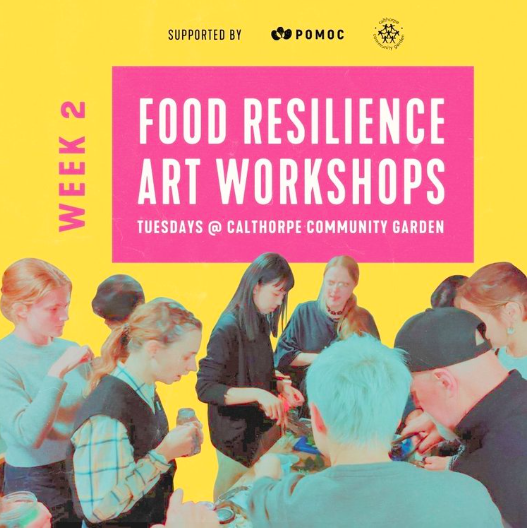



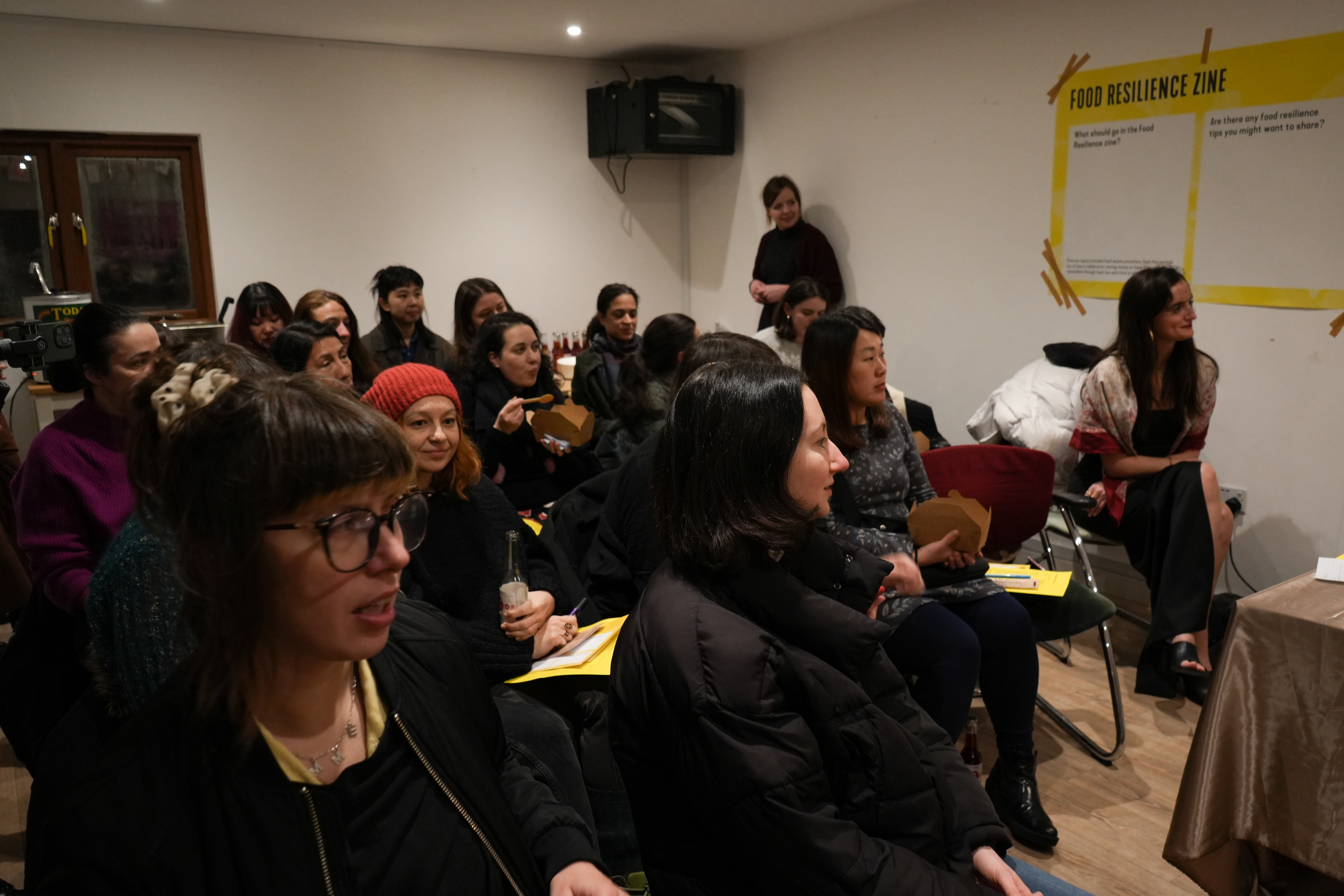



As a curator and researcher, I explore issues of East-Central European identity and representation in post-Brexit Britain. My practice looks at the systemic and cultural frameworks of CEE-related art production, curation, and facilitation. It often includes interrogation of politics of gender, class, queerness, national stereotypes, and underrepresentation of CEE artists in the UK and globally.
My approach towards working with artists, fellow curators, and institutions is based on mutual respect, empathy, and care. My practice is transnational, queer and feminist.
My Ph.D. study at the University of the Arts London is an integral part of my practice. My project looks at the history of exhibitions of East-Central European women artists in Britain after 1989.
I am also working as an Artist Development Coordinator at BACKLIT Gallery in Nottingham. As part of my role, I implement development strategies for BACKLIT’s studio and associate artists.